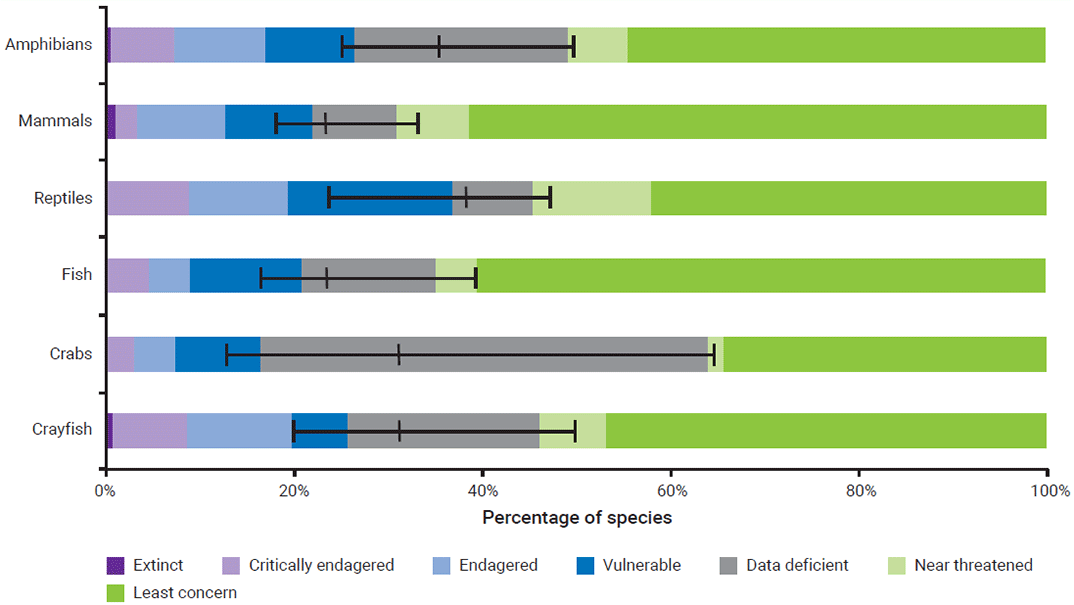Freshwater systems are exposed to the full gamut of multiple pressures with changes in land use, habitat loss, invasive species, use of watercourses for development of hydroelectric power, and pollution creating widespread and significant impacts (see Section 9.2). Wetland loss has been long term and extensive, and freshwater species, especially in tropical ecosystems, have declined at a faster rate than those in any other biome (see Section 6.4.1).
The abundance of monitored populations of freshwater vertebrate species declined an average of 81 per cent over the past 42 years (WWF 2016). A summary of extinction risk of global freshwater fauna indicates that reptiles have the highest estimated risk among the six groups assessed (Figure 6.18). About a third of the more than 7,000 freshwater invertebrate species on the IUCN Red List are considered threatened, with gastropods being the most threatened group (Collen et al. 2012). These species combine to provide a wide range of critical services for humans, such as flood protection, food, water filtration and carbon sequestration (Collen et al. 2014).

Industrial-era agriculture results in nitrogen- and phosphorousdriven eutrophication of terrestrial, freshwater and nearshore marine ecosystems, and pesticide use can further degrade freshwater ecosystems (Malaj et al. 2014; Mekonnen and Hoekstra 2015). Globally, it is estimated that the number of lakes with harmful algal blooms will increase at least 20 per cent by 2050 (United Nations Educational, Scientific and Cultural Organization [UNESCO] 2014). Cyanobacterial algal blooms can result in lowered value for recreational uses, reduced aesthetics, lower dissolved oxygen concentrations, decline in drinking water quality and the production of toxins, which can impact both wildlife and human health (Brooks et al. 2016).